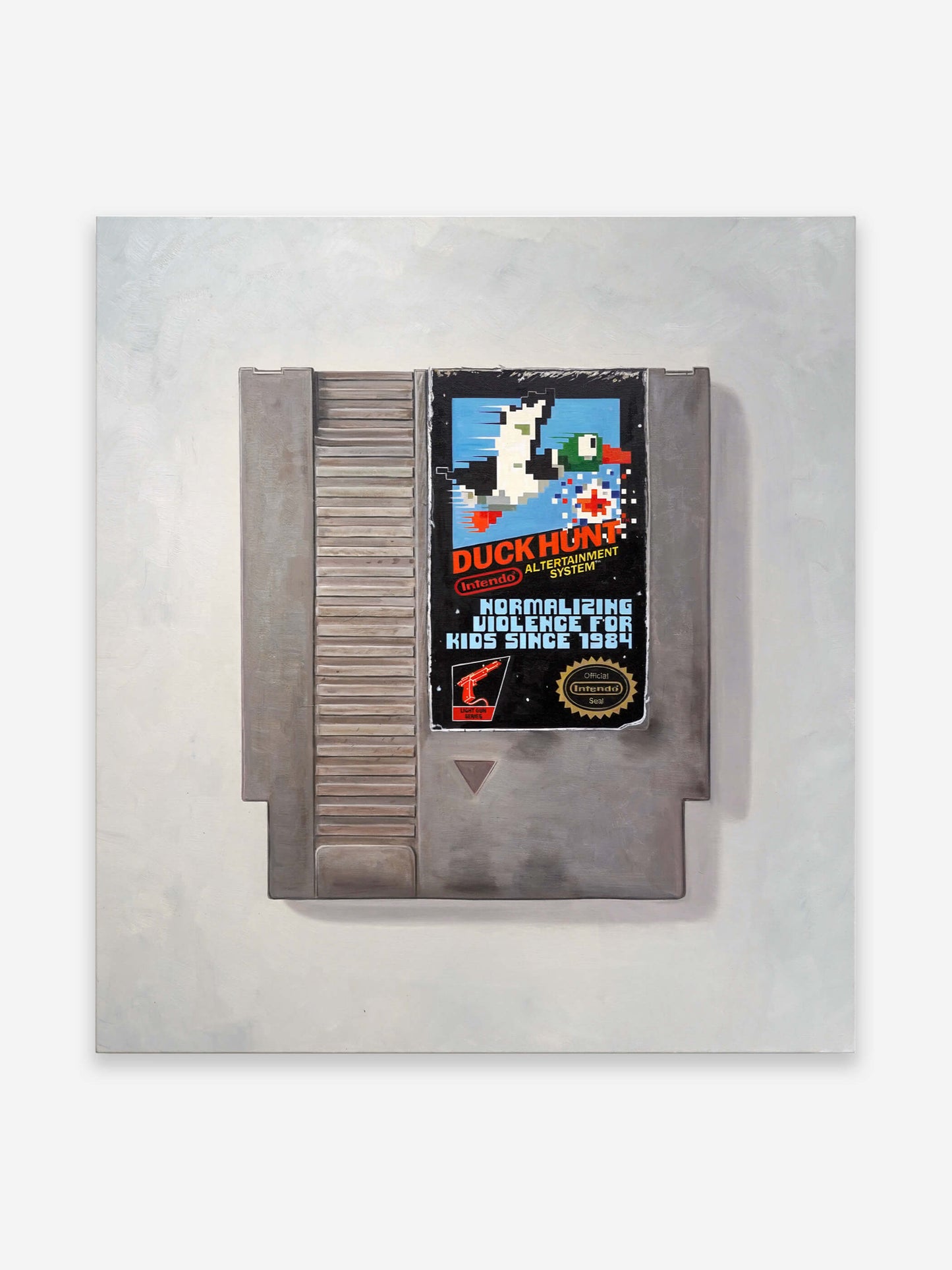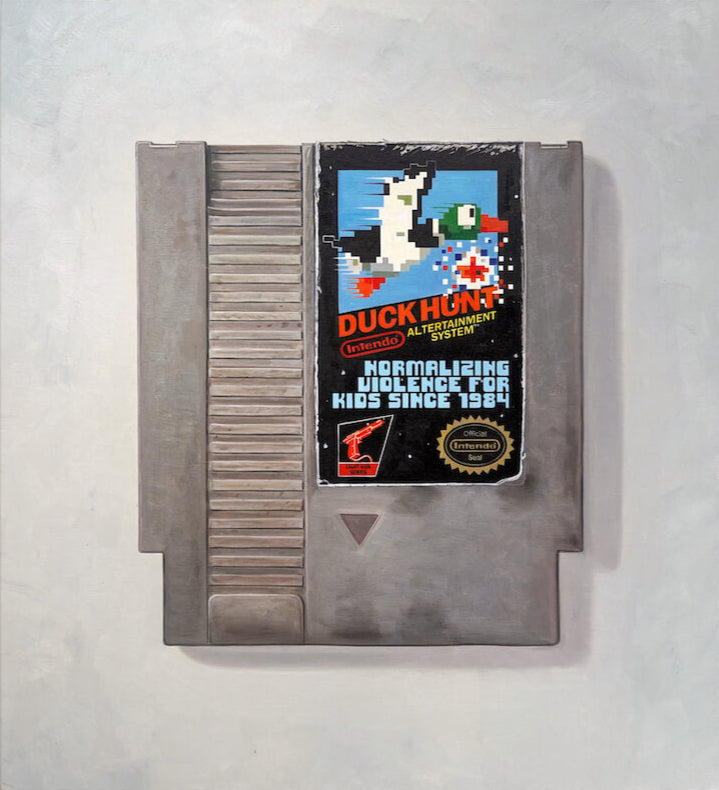Duck Hunt: Childhood Violence
Duck Hunt: Childhood Violence
–
This service is currently unavailable,
sorry for the inconvenience.
Pair it with a frame
Frame options are for visualization purposes only.
FRAME STYLE
MATTING SIZE
BUILDING YOUR EXPERIENCE
powered by Blankwall
Take a few steps back and let your camera see more of the scene.
powered by Blankwall
Was this experience helpful?
About this work
One of the best-selling games for the Nintendo NES was Duck Hunt, a game that utilised the iconic Zapper. My friends and I played it endlessly, setting up all kinds of rules to keep the game fair, like how far we had to stand from the screen. The thrill of hitting those digital ducks was addictive, and we competed fiercely for the highest scores.
Even as a child, I had moments of reflection. We were shooting ducks, after all—real animals, even if they were just pixels on a screen. It made me wonder about the effects of simulated violence. Did games like Duck Hunt desensitise us to real violence? The phrase 'Normalising Violence for Kids since 1984' on the piece is a nod to this thought. It’s a playful yet critical look at how games might contribute to a cultural desensitisation to violence.
This piece ties back to the Zapper's role in introducing kids to shooting games, questioning whether these games merely reflected existing interests or actively shaped them. It’s a lighthearted critique of how early gaming experiences could influence our views on violence and firearms.
Duck Hunt, released in 1984, was often bundled with the NES console, contributing to its widespread popularity. The game was one of the first to use the light gun technology, making it a pioneering title in interactive gaming.
Painting details
Dimensions:
Unframed: 90cm (W) x 100cm (H)
Framed: 100cm (W) x 110cm (H) x 4cm (D)
Medium:
Oil on canvas. Unique 1/1
Authentication:
Signed on verso
Certificate of Authenticity:
Arrives with a certificate of authenticity.
Year:
2023.
1/1 Unique
Shipping within 4 weeks
Couldn't load pickup availability
–
About this work
One of the best-selling games for the Nintendo NES was Duck Hunt, a game that utilised the iconic Zapper. My friends and I played it endlessly, setting up all kinds of rules to keep the game fair, like how far we had to stand from the screen. The thrill of hitting those digital ducks was addictive, and we competed fiercely for the highest scores.
Even as a child, I had moments of reflection. We were shooting ducks, after all—real animals, even if they were just pixels on a screen. It made me wonder about the effects of simulated violence. Did games like Duck Hunt desensitise us to real violence? The phrase 'Normalising Violence for Kids since 1984' on the piece is a nod to this thought. It’s a playful yet critical look at how games might contribute to a cultural desensitisation to violence.
This piece ties back to the Zapper's role in introducing kids to shooting games, questioning whether these games merely reflected existing interests or actively shaped them. It’s a lighthearted critique of how early gaming experiences could influence our views on violence and firearms.
Duck Hunt, released in 1984, was often bundled with the NES console, contributing to its widespread popularity. The game was one of the first to use the light gun technology, making it a pioneering title in interactive gaming.
Painting details
Dimensions:
Unframed: 90cm (W) x 100cm (H)
Framed: 100cm (W) x 110cm (H) x 4cm (D)
Medium:
Oil on canvas. Unique 1/1
Authentication:
Signed on verso
Certificate of Authenticity:
Arrives with a certificate of authenticity.
Year:
2023.
Packaging
Packaging
We ship framed and unframed originals in flat bespoke boxes. You'll find the COA inside. If you order more than one original, they will be shipped together in the same box.








